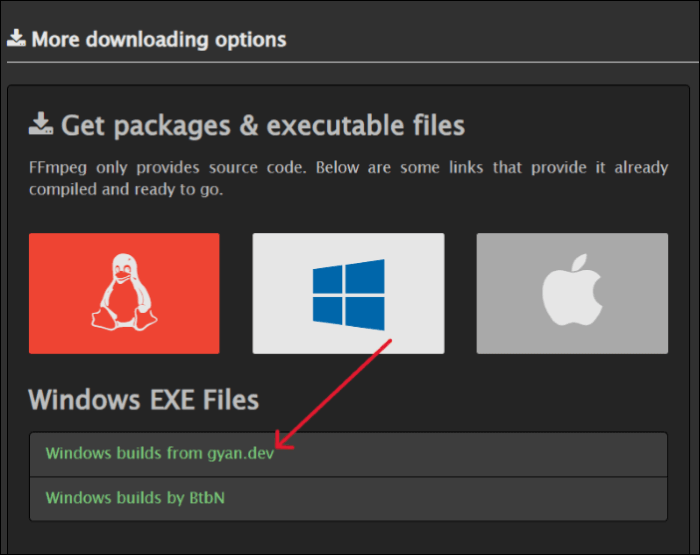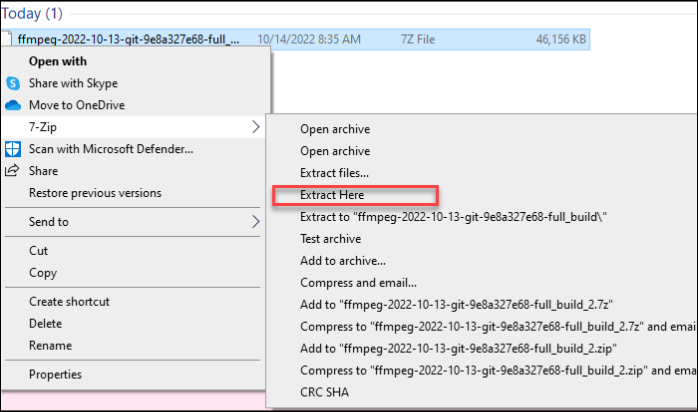How to Remove Audio from Video with FFmpeg (Full Tips)🕵️
Dawn Tang updated on Mar 28, 2025 to AI Article
With the help of FFmpeg remove audio from video codes, you can remove or replace audio from videos. In this post, we will see the installation process and code snippets to remove the audio from video using FFmpeg on various OS.
There are many converting and compression tools for audio and video codecs, but something different from FFmpeg. FFmpeg is a command-line tool that offers way more functionalities than its contemporaries. This tool allows you to record, transcode, mix, format, stream multimedia content, and do more. Know how to remove audio from video in Premiere Pro or any tool with FFmpeg by following some commands.
This post will show you the installation process of FFmpeg on various devices and how FFmpeg removes audio and video works.
Though there is an FFmpeg official documentation, some may still find the installation part a little clumsy. Here's a detailed tutorial on installing FFmpeg on Windows, Mac, and Linux. FFmpeg is complex for beginners, and many seek solutions for vocal remover software free for download 10. Do help our friends and share this post on your social media.
Here's a step-by-step tutorial to download FFmpeg on Windows.
Step 1. Go to the FFmpeg download page and hover over the Windows logo to see download options for Windows. Click on "Windows builds from gyan.dev."

Step 2. In the git master builds window, click on "ffmpeg-git-full-7z." This version contains the most up-to-date libraries.
Step 3. Find the downloaded file, right-click, hover over 7-Zip, and choose "Extract here."

Step 4. To edit the FFmpeg to the path, open "Edit the system environment variables." Select the "Path" under user variables and click "Edit."
Step 5. Click new, add "C:\ffmpeg\bin" to the empty field, click "OK" and confirm.
Step 6. To verify, open Command Prompt or Powershell and run the "ffmpeg" command. The below output confirms the installation.
Like Windows, we can install FFmpeg on Mac using the Static Build options. While Static Build allows you to choose and install the latest version easily, app management will be slightly tricky. Here's how you can do it:
Step 1. Hover over the macOS symbol on the official FFmpeg download page.
Step 2. Click on the "Static builds for macOS 64-bit" link and scroll down to see "Download as ZIP" in the options. Click on it.
Step 3. The file automatically unzips; if not, double-click on it to unzip.
Step 4. Move the file to your desired directory and note the path.
Step 5. Open the terminal and add the directory to the path variable using the below command. For example, if your file's location is /Users/test/local, type it and click enter.
export PATH=$PATH:/Users/test/Local
Step 6. Type in ffmpeg to verify the installation on your Mac.
Multiple Linux distributions are available, but Ubuntu is the most popular one. There are two ways to install FFmpeg on Ubuntu- one is to use the Personal Package Archives (PPA) and the other using the default repository. But, if your device runs Ubuntu 20.04 or 22.04, you must install it via the default repository.
1️⃣For Ubuntu 18.04 via PPA:
Step 1. Open the "Terminal" and log in as a root user.
Step 2. Install the "software-properties-common" package to manage the repositories.
sudo apt-get install software-properties-common
Step 3. Now, add "mc3man" PP to install it and run the commands one after the other to upgrade it.
sudo add-apt-repository ppa:mc3man/trusty-media
sudo apt-get update
sudo apt-get dist-upgrade
Step 4. Now, run the below command to install FFmpeg.
sudo apt-get install ffmpeg
2️⃣For Ubuntu 20.04 via default repository
Step 1. Open the "Terminal" as a root user.
Step 2. Now, run the following commands continuously to install FFmpeg via the default repository.
sudo apt update
sudo apt upgrade
sudo apt install ffmpeg
If you like the content, share it with your friends.
There are multiple ways and scenarios to remove audio from video and compress video with FFmpeg. We will see various requirements and code snippets to perform those functions.
Some prefer to keep the metadata like subtitles without audio, and a few want the video after removing audio from videos.
1️⃣Remove audio instead of all metadata
The "-an" command removes the audio, and the "-c" copy option copies the video without re-encoding.
2️⃣Remove everything but the video
The "-an" and "-c" copy snippets remove the audio and copy the video without re-encoding. The "-vcodec" removes everything from the output file except the video.
MKV includes audio and video streams in many encoding formats. If you want to remove audio from it, here's the code.
MP4 is the most popular and used format in today's world. The MP4 uses specific parameters to play the video, so we must specify them to get the correct file. Here's the code to remove audio from MP4:
This "-pix_fmt yuv420p -vcodec libx264 -acodec aac" snippet forces the FFmpeg to use the pixel format for audio and video codecs, which media players can understand.
If your file has multiple audio tracks and you want to remove a specific audio, FFmpeg allows it. The code goes like this:
The "-map 0" maps or adds all the elements except the first audio, and "-map -0:a:0" subtracts the first audio. The numbering starts from 0, so the code has 0 for 1st audio track.
Audio extraction is quite helpful and a common practice for podcasts. The only difference is that we discard everything besides the audio.
The "-vn" code is similar to -an, and very obvious it removes the video. The following code, "-acodec copy" commands the FFmpeg to copy the audio and not re-encode it.
This requires a two-step process, first is to remove the audio, and next is to replace the audio with another audio.
While this may seem confusing, the simple explanation is we are selecting the 0th track from the 1st input (video) and replacing it with the audio from the 2nd input (audio). Since the numbering system starts at 0, this seems a little different.
Then, we copy the video and re-encode it to put it in the new file using the "-c:a" command. The -shortest command is used to end the conversion when the length of the shorter input is reached.
You can also grab the audio and video using FFmpeg. You have to specify the input format and device to do it.
See also:
You can watch the video to learn more ways to remove vocals from a video:
FFmpeg is complex and not beginner-friendly. You will have to put in a lot of work even to get the basics of it. While there are many tools to edit and remove audio, the best audio online program has to be EaseUS Online Vocal Remover.
You can quickly mute audio and remove vocals with the tool. Furthermore, you can remove background noise from audio, extract instruments from the audio, and paste YouTube/SoundCloud URL to the website for vocal removal. It's way easier to use, and you have to upload a video file, sleelct one stem, or rip audio from the video with just a click. If you want to see it, visit the tool and try it.
Key Features of EaseUS Online Vocal Remover:
Disable audio from video in one click with EaseUS Online Vocal Remover
Step 1. Visit the EaseUS website and go to its "Vocal Remover" sidebar.
Step 2. Click "Choose File" or drop the video file in the area and wait for the AI analysis.
Step 3. Download the vocal/instrumental track to finish removing. You can choose to output the "Instrumental track" and "Vocal track" in MP4 for video or in AAC for audio.
FFmpeg is a great tool for audio, videos, and many formats. You can use FFmpeg to remove audio from video features to remove or extract audio from various files. The post gives you an explanation and code snippets to remove audio from the video. FFmpeg requires a learning curve to use seamlessly, but you can do the same using a tool like EaseUS online vocal remover.
Just upload the video and mute the audio with a click. Visit the tool now to see it for yourself.
Some of the most frequent FAQs asked on FFmpeg remove audio from video. I hope you find these queries helpful.
There are several ways you can do it. You can use FFmpeg and specify the audio track to remove the audio track using the code. The second method is to use high-end editors like Adobe Premiere Pro to mute the audio and download the final output.
Yes, all you have to do is extract the audio. While audio and video are different tracks, you must mute sounds using software tools like FFmpeg or EaseUS and download the only video.
While there are not many tools compatible with Linux. FFmpeg is a great tool to remove audio from video in Linux. You just have to input the video and use the -an command to remove the audio.
Related Articles
How to Add Subtitles in QuickTime Player: A Complete Guide📖
Top 10 Song Key Finders for Web and Desktop [2025] 🪄
CapCut vs InShot: Choose the Best Video Editor 🏅
How to Add Subtitles With Avidemux [Step-by-Step Guide]🔥